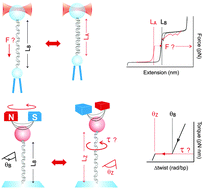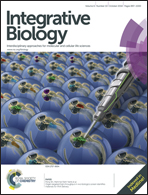Single-molecule portrait of DNA and RNA double helices
Abstract
The composition and geometry of the genetic information carriers were described as double-stranded right helices sixty years ago. The flexibility of their sugar–phosphate backbones and the chemistry of their nucleotide subunits, which give rise to the RNA and DNA polymers, were soon reported to generate two main structural duplex states with biological relevance: the so-called A and B forms. Double-stranded (ds) RNA adopts the former whereas dsDNA is stable in the latter. The presence of flexural and torsional stresses in combination with environmental conditions in the cell or in the event of specific sequences in the genome can, however, stabilize other conformations. Single-molecule manipulation, besides affording the investigation of the elastic response of these polymers, can test the stability of their structural states and transition models. This approach is uniquely suited to understanding the basic features of protein binding molecules, the dynamics of molecular motors and to shedding more light on the biological relevance of the information blocks of life. Here, we provide a comprehensive single-molecule analysis of DNA and RNA double helices in the context of their structural polymorphism to set a rigorous interpretation of their material response both inside and outside the cell. From early knowledge of static structures to current dynamic investigations, we review their phase transitions and mechanochemical behaviour and harness this fundamental knowledge not only through biological sciences, but also for Nanotechnology and Nanomedicine.


 Please wait while we load your content...
Please wait while we load your content...